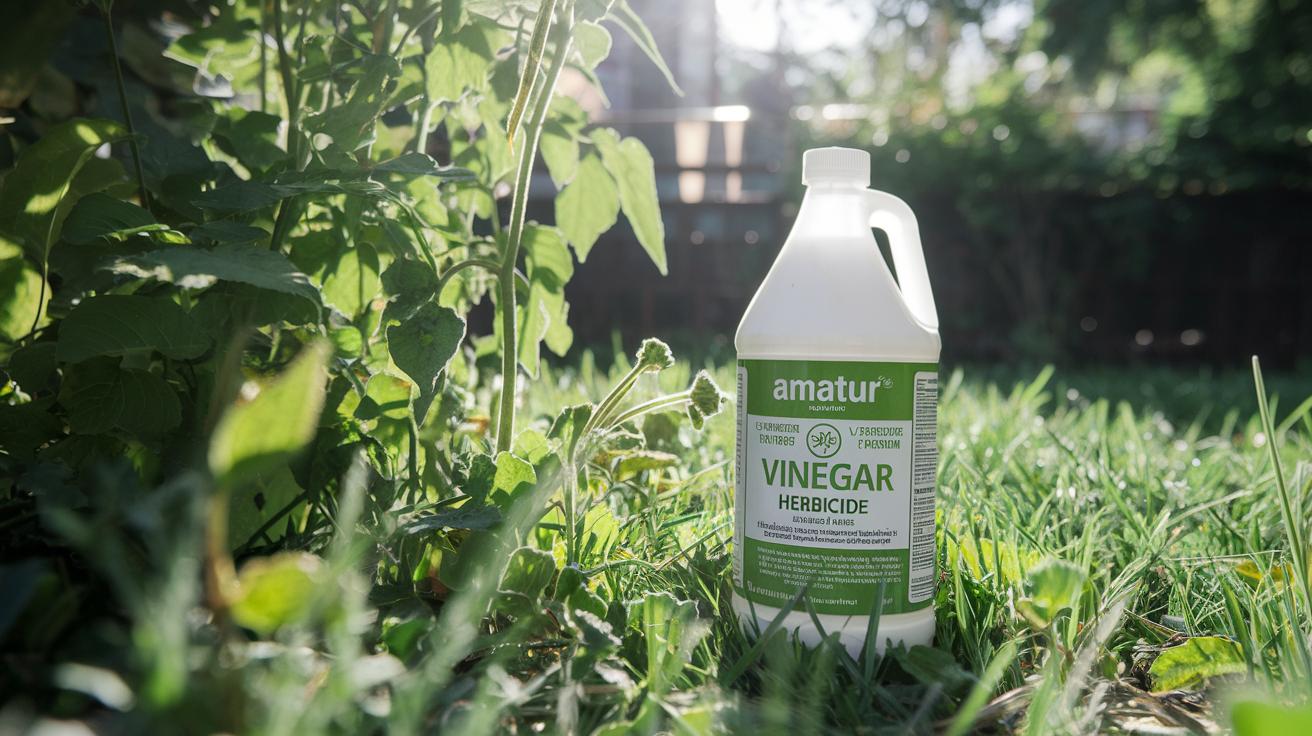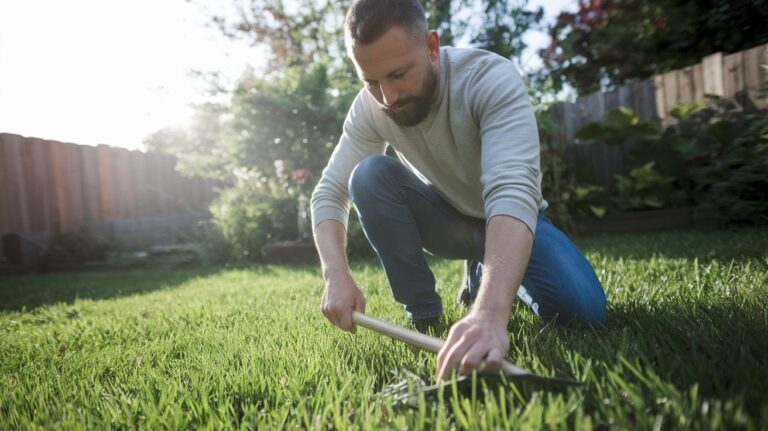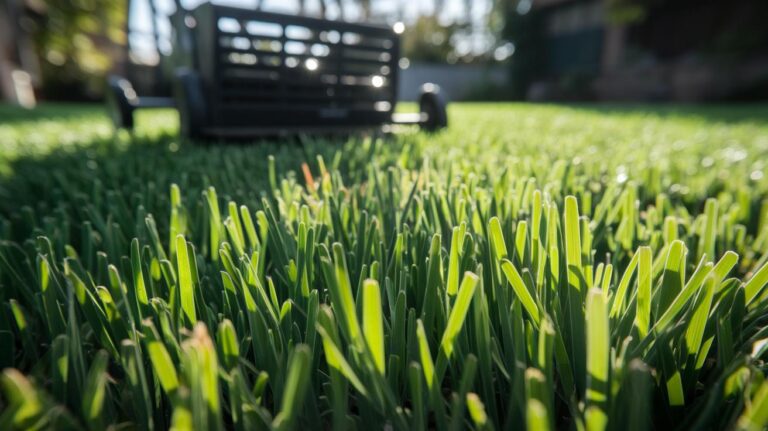Vinegar Herbicide Recipe For Organic Weed Control Amazing
Ever thought your salad dressing could battle weeds?
It sounds wild, but white vinegar from your pantry really can shrivel stubborn shoots without harsh chemicals.
Picture a tangy mist sizzling on green leaves while your soil stays happy.
Feels like garden magic, right?
In the next few steps, you’ll learn a simple herbicide (weed killer) recipe using pantry staples.
You’ll use vinegar, a bit of salt, and just one drop of dish soap (oops, I dropped half a teaspoon once).
Just stir them together, fill a spray bottle, and mist away those weeds.
You’ll swap harsh chemicals for a homemade mix that zaps weeds fast and treats your garden gently.
DIY Vinegar Herbicide Ratio and Recipe
Have a few stubborn weeds popping up? Let’s mix a gallon of homemade weed killer. It smells tangy like salad dressing but works wonders. And it’s gentler on the soil (the top layer where your plants grow) than store-bought sprays.
Ingredients
- 1 gallon white vinegar (the sour pantry staple) with 10–20% acetic acid (the part that dries out green leaves). If you only have 5% household vinegar, it’ll still handle small, young weeds.
- 1 cup table salt (optional). Salt pulls water from tougher shoots.
- 1 tablespoon liquid dish soap. Soap lowers surface tension so the spray clings to leaves.
Mixing Steps
- Pour the vinegar into a clean bucket or garden sprayer (the pump bottle you use for misting plants).
- Stir in the salt until no grains remain. No crunchy bits.
- Add the dish soap and gently swirl. Oops, don’t stir so hard you make suds.
- Pour the mix into your sprayer, leaving a little air space. You’ll need to shake before each use.
By the way, my cat always sniffs around new smells in the garden.
Back to business, give the bottle a good shake, then spot-spray weeds on a sunny, dry day. You’ll watch them wilt fast, just like a chemical would do. But you’ll be treating your garden kindly with simple kitchen items.
DIY Vinegar Herbicide Ratio and Recipe

If you want to zap weeds without harsh chemicals, vinegar is your friend. It uses acetic acid (the acid in vinegar that pulls water out of leaves) to make them wilt fast. For stubborn, deep-rooted weeds, go with 10 to 20 percent acetic acid. But if you’re just spraying tiny, fresh shoots, plain 5 percent white vinegar does the trick.
| Vinegar Strength | Mix | Best For |
|---|---|---|
| 10 to 20 percent acetic acid | 1 to 1 with water | Stubborn, deep-rooted weeds |
| 5 percent white or apple cider vinegar | Straight or 4 to 1 with water | Young shoots (apple cider leaves a brown stain on light surfaces) |
Fill a spray bottle, mist the leaves on a dry morning, and watch those weeds flop by afternoon. Have you tried this in your garden yet?
Equipment and Mixing Method for Vinegar Herbicide
| Tools You’ll Need |
|---|
| Liquid measuring cup, tablespoon & teaspoon (for measuring) |
| Hand pump or backpack sprayer (a bottle you pump to spray) |
| Sturdy bucket or mixing jug (big container with a handle) |
Mixing this weed spray is a snap and uses stuff you probably have in your kitchen. You’ll smell the tangy vinegar first. But hang in there – the mix is tough on weeds and gentle on your wallet.
I guess you could say it’s like making salad dressing – just not for eating. Back to the steps:
- Rinse your sprayer or spray bottle with clean water. Pump it once or twice and peek at the seals. You don’t want leaks spraying salt water all over.
- Pour 1 gallon (about 16 cups) of white vinegar into your bucket or mixing jug. You might wrinkle your nose at the sharp vinegar smell.
- Stir in 1 cup of salt (the kind you use in the kitchen) until it’s fully dissolved. You might see tiny crystals at first – they’ll vanish as you stir.
- Add 1 tablespoon of mild dish soap and stir gently. Go slow so you don’t end up with suds. We’re aiming for a light film that helps the spray stick to leaves.
- Pour the mix back into your sprayer. Leave about a thumb’s width of air at the top – that way you can shake it before each use.
- If you’re using a backpack sprayer, adjust the straps so it sits snug and high on your back. That keeps it balanced when you walk.
- Test the nozzle on pavement or an old board. Pump the trigger a few times and watch for drips. You’ll know it’s ready when you get an even spray.
Vinegar Herbicide Recipe For Organic Weed Control Amazing

Pick a warm, sunny morning when the forecast says no rain for at least a day. Late morning is perfect, dew has dried and the sun helps the spray stick. Ever watched a weed shrivel in minutes under bright light? It’s pretty neat.
Aim the spray right at those pesky leaves and watch them droop fast. Be careful not to hit any plants you want to keep, vinegar burns any green it touches. Oops, spilled a bit just now, so I know that’s true.
Here’s a simple step-by-step:
- Check the weather for dry, sunny conditions
- Strain and fill your garden sprayer with the vinegar mix
- Adjust the nozzle for a fine mist so you don’t soak the soil
- Lightly coat every weed leaf until you see tiny droplets
- Keep an eye on treated weeds and reapply in 7 to 10 days if needed
Adjusting the nozzle to a fine mist helps you get an even sparkle on each leaf. Stand back and listen for that soft hiss, proof you’re covering them all. Leaves should start to wilt within hours under the sun.
Over the next week, peek at the spots you sprayed. If you see green shoots coming up, plan a follow-up spray in 7 to 10 days. That second round stops perennial plants (plants that come back year after year) from bouncing right back.
When you’re done, rinse out your sprayer and tuck it away out of reach of kids or pets. A clean sprayer means crisp performance next time you need it.
Safety Precautions When Using Vinegar Herbicide
Vinegar herbicide (vinegar-based weed killer) and salt can sting if they touch bare skin or splash into your eyes. Have you ever felt vinegar tingle on a cut? Ouch. So slip on chemical-resistant gloves (gloves that block acids) and wear snug goggles before you mix or spray. If a drop lands on your arm or finds your eye, rinse with cool water right away.
- Slip on chemical-resistant gloves to keep your hands safe.
- Wear snug-fitting goggles to shield your eyes.
- Pull on long sleeves, long pants, and closed-toe shoes to block any drips.
This spray is non-selective, so it kills every green leaf it touches. That stray mist can wilt your petunias or tiny seedlings. Oops, I once hit my basil by mistake. Keep the weeds you’re zapping at least a few feet away from plants you love. If you accidentally coat your patio or porch, wipe it off fast so the stone or wood won’t dull.
Don’t spray if rain is on its way. Rain can wash the weed killer into spots you didn’t mean to hit, like your squash patch roots or a gutter that leads to a creek. Pick a clear, calm day so droplets won’t drift onto grass or walkways.
Effectiveness and Repeat Treatments with Vinegar Herbicide

Ever spray annual weeds (weeds that live only one season) with vinegar herbicide (weed killer)? You’ll often see them wilt by afternoon as the vinegar pulls moisture right from those tender leaves.
And perennials (plants that come back every year)? They might send up new shoots after a week or so. Plan to spray again in about 7 to 10 days to catch that fresh growth before it gets too tough.
But for deep-rooted broadleaf weeds (weeds with wide leaves and strong roots), one spray won’t cut it. You’ll need to hit them multiple times, tackling each wave of leaves until they finally give up.
Environmental Impact and Soil Health Considerations for Vinegar Herbicide
Spraying vinegar herbicide feels gentler on the earth than many store-bought chemicals. But if it hangs out in your soil too long, it can drop the pH (a measure of acidity or basicness) around roots for a day or two. So it’s smart to peek at that pH now and then as part of your soil health check.
Keep a one-foot gap between where you spray and any seedlings (young plants) or veggie beds. Oops, too close and you might scorch those tender leaves.
When you’re done, pour any leftover mix into a bucket and give it a final spritz on a tough weed patch instead of dumping it down the drain. Rinse your sprayer with fresh water, then, instead of a flower bed, aim that rinse water at more weeds so the acid doesn’t mess with delicate soil life. By the way, my cat loves chasing the droplets when I rinse.
Don’t spray on windy days. You’ll risk drifting vinegar onto your grass or straight into storm drains. That can rain acid into local streams and harm fishy neighbors. Taking your time here keeps earthworms and other helpful critters happy under the surface.
Then let your soil rest for at least a week before planting new seedlings so it can recover. And remember to rinse your gear after each use, that little step helps protect all the tiny life in your soil.
Final Words
In the action, we covered the exact mix of white vinegar, salt, and soap. You learned how to pick the right vinegar strength and measure tools.
Then we laid out when and how to spray on a sunny day, nozzle tips, and repeat schedules. We also noted gloves, eye protection, soil pH, and safe disposal.
Now armed with this vinegar herbicide recipe for organic weed control, you’ve got a simple, eco-friendly routine for tackling weeds. Enjoy a thriving, low-fuss backyard!
FAQ
What is the correct ratio for a DIY vinegar herbicide?
The vinegar herbicide recipe calls for 1 gallon of vinegar, 1 cup of salt (optional), and 1 tablespoon of liquid dish soap. Stir well to spread ingredients evenly in the spray solution.
Can I use regular 5% white vinegar instead of stronger vinegar for weeds?
Regular 5% white vinegar controls small young weeds by pulling water out of leaf cells. A stronger 10–20% acetic acid blend handles tougher varieties more effectively.
What tools do I need to mix and spray vinegar herbicide at home?
Basic mixing gear includes measuring cups, spoons and a clean sprayer or spray bottle. Handheld sprayers suit small patches and backpack models cover larger areas.
How do I apply homemade vinegar herbicide for best weed control?
Apply on a dry sunny day with no rain forecast. Spray leaf surfaces until wet, keep spray off plants you want to keep and reapply tough weeds in 7–10 days.
What safety gear is needed when using vinegar and salt herbicide?
Wear gloves and eye protection when handling vinegar or salt mixtures. Keep spray off skin and eyes, and avoid drifting spray onto plants you treasure.
How often should I repeat treatment for stubborn or perennial weeds?
Young annual weeds often die after one application, while perennials and deep-rooted weeds may need repeat sprays every 7 to 10 days until foliage drops.
Does vinegar herbicide affect soil health or harm other plants?
Vinegar mixes can lower soil pH and harm nearby seedlings or perennials. Use sparingly, keep spray off edible beds, and pour unused mix into a drain to avoid ground build-up.
Is apple cider vinegar a suitable alternative for organic weed control?
Apple cider vinegar has around 5% acid and will work on small weeds, but it’s less potent than high-acid white vinegar blends for older or well-rooted plants.







